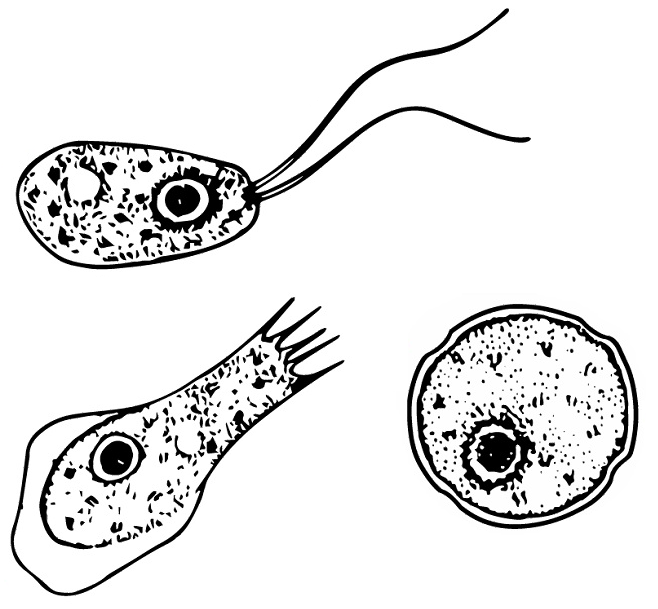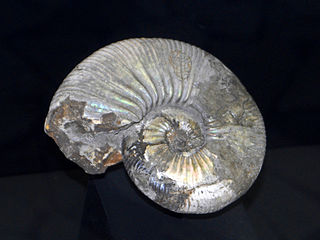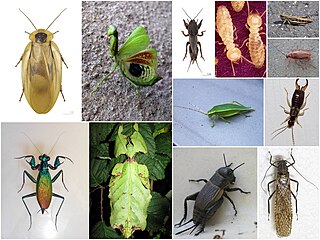
The Percolozoa are a group of colourless, non-photosynthetic Excavata, including many that can transform between amoeboid, flagellate, and cyst stages.

The Poeciliidae are a family of freshwater fishes of the order Cyprinodontiformes, the tooth-carps, and include well-known live-bearing aquarium fish, such as the guppy, molly, platy, and swordtail. The original distribution of the family was the Southeastern United States to north of Río de la Plata, Argentina, and Africa, including Madagascar. Due to release of aquarium specimens and the widespread use of species of the genera Poecilia and Gambusia for mosquito control, though, poeciliids can today be found in all tropical and subtropical areas of the world. In addition, Poecilia and Gambusia specimens have been identified in hot springs pools as far north as Banff, Alberta.

In botany, a bulb is structurally a short stem with fleshy leaves or leaf bases that function as food storage organs during dormancy.

Trypanosomatida is a group of kinetoplastid excavates distinguished by having only a single flagellum. The name is derived from the Greek trypano (borer) and soma (body) because of the corkscrew-like motion of some trypanosomatid species. All members are exclusively parasitic, found primarily in insects. A few genera have life-cycles involving a secondary host, which may be a vertebrate, invertebrate or plant. These include several species that cause major diseases in humans.

Monogeneans are a group of ectoparasitic flatworms commonly found on the skin, gills, or fins of fish. They have a direct lifecycle and do not require an intermediate host. Adults are hermaphrodites, meaning they have both male and female reproductive structures.

The Japanese spider crab is a species of marine crab that lives in the waters around Japan. It has the largest leg span of any arthropod. They go through three main larval stages along with a prezoeal stage in order to grow to their great size. The genus Macrocheira contains multiple species. Two fossil species of this genus have been found, Macrocheira ginzanensis and Macrocheira yabei, both from the Miocene of Japan. The diverse taxonomic history is an important part of what these creatures are and how they evolved to be what they are today. These creatures are not isolated however, as they are the subject of fishery and are considered a delicacy. Conservation efforts are being put forth to protect these creatures and their population from the dangers of overfishing.
The Campeonato Rondoniense is the football league of the state of Rondônia, Brazil. Between 1945 and 1990, the league was an amateur competition. The professional league started in 1991.

Snakeflies are a group of predatory insects comprising the order Raphidioptera with two extant families: Raphidiidae and Inocelliidae, consisting of roughly 260 species. In the past, the group had a much wider distribution than it does now; snakeflies are found in temperate regions worldwide but are absent from the tropics and the southern hemisphere. They are a relict group and have been considered living fossils, as species from the early Jurassic period closely resemble modern-day species.

The Plasmodiidae are a family of apicomplexan parasites, including the type genus Plasmodium, which is responsible for malaria. This family was erected in 1903 by Mesnil and is one of the four families in the order Haemospororida.

The Phytomyxea are a class of parasites of plants. They are divided into the orders Plasmodiophorida and Phagomyxida. A more common name for them is the plasmodiophorids, but this does not always include Phagomyxa.
The Rupelian is, in the geologic timescale, the older of two ages or the lower of two stages of the Oligocene epoch/series. It spans the time between 33.9 and28.1 Ma. It is preceded by the Priabonian stage and is followed by the Chattian stage.

Pipunculidae is a family of flies (Diptera) commonly termed big-headed flies, a reference to the large (holoptic) eyes, which cover nearly the entire head. The family is found worldwide and more than 1300 species have been described.

Acanthohoplites is an extinct genus of ammonites in the family Parahoplitidae that lived in the Aptian and Early Albian stages of the Early Cretaceous.

Monograptus is a genus of graptolites in the Order Graptoloidea. This particular genus is the last stage of the graptoloid evolution before its extinction in the early Devonian. A characteristic of the genus includes one uniserial stipes with very elaborate thecae. This particular genus contains large number of graptolite species and may not be monophyletic.

Similicaudipteryx, meaning "similar to Caudipteryx", is a genus of theropod dinosaur of the family Caudipteridae.

Colpodella is a genus of alveolates comprising 5 species, and two further possible species: They share all the synapomorphies of apicomplexans, but are free-living, rather than parasitic. Many members of this genus were previously assigned to a different genus - Spiromonas.

Crustaceans may pass through a number of larval and immature stages between hatching from their eggs and reaching their adult form. Each of the stages is separated by a moult, in which the hard exoskeleton is shed to allow the animal to grow. The larvae of crustaceans often bear little resemblance to the adult, and there are still cases where it is not known what larvae will grow into what adults. This is especially true of crustaceans which live as benthic adults, more-so than where the larvae are planktonic, and thereby easily caught.
Merocystis is a genus in the phylum Apicomplexa.
Lipotropha is a genus of parasitic alveolates of the phylum Apicomplexa.

The cohort Polyneoptera is a proposed taxonomic ranking for the Orthoptera and all other Neopteran insects believed to be more closely related to Orthoptera than to any other insect orders. These winged insects, now in the Paraneoptera, were formerly grouped as the Hemimetabola or Exopterygota on the grounds that they have no metamorphosis, the wings gradually developing externally throughout the nymphal stages.















